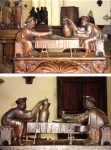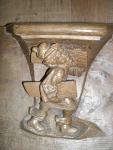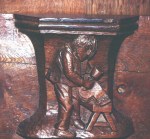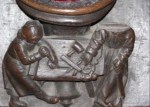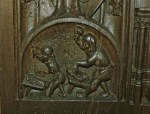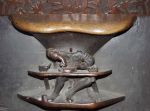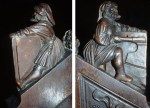
After carving scenes from the Bible, parables, the local trades and a full range of human foibles a carver of misericords might turn his skills to a depiction of his craft. The Kings Lynn Master Carver is probably the most well-known and finely-carved misericord. In the space of about 10″ by 22″ (25:4 cm by 56 cm) the carver has the master at his bench, two apprentices at a bench to the left and a third figure approaches from the right with a jug. Their carving tools can easily be seen on each bench. Framing the workshop are the letter ‘W’ with a saw and the letter ‘V’ with a chisel. Remarkable work.
If you aren’t familiar with the misericord it is a carving on the underside of a seat in a choir stall. The top of the seat has a small ledge with the carving below. During religious services choir members had to stand for long periods. For relief they could lean back on the ledge. The modern equivalent is perching on your luggage as you wait at the departure gate because your flight has been delayed. The information sheet for the Kings Lynn misericord has excellent details on misericords and their history.
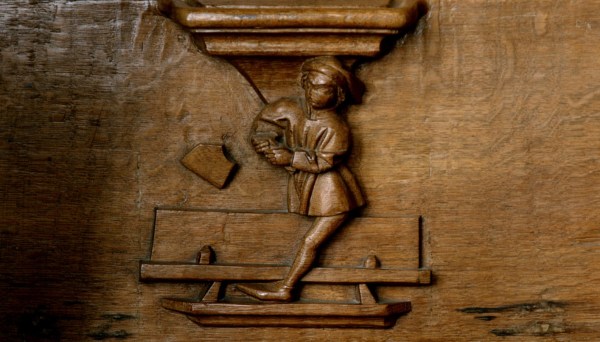
There are thousands of misericords in churches across Europe and in museums worldwide. Many misericords were destroyed or vandalised for religious reasons, lost or stolen during restorations, or lost during wars. Today, misericords are extremely vulnerable due to their age and also to theft. In many you will see missing pieces: heads, arms, tools.
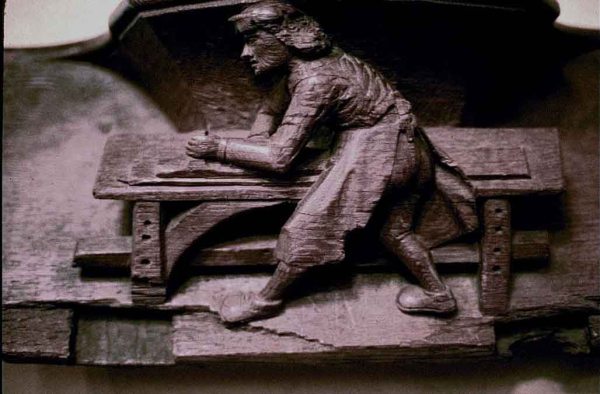
Several groups have been working to accumulate photographs of misericords and organize them by location and country. Because of differences in descriptions, or a lack of description, it can be difficult to locate misericords that feature a particular subject. A woodworking scene might be described as ‘carpentry’ or ‘occupation’ or have no description at all. There are also plenty of books that are helping to preserve the record of misericords.
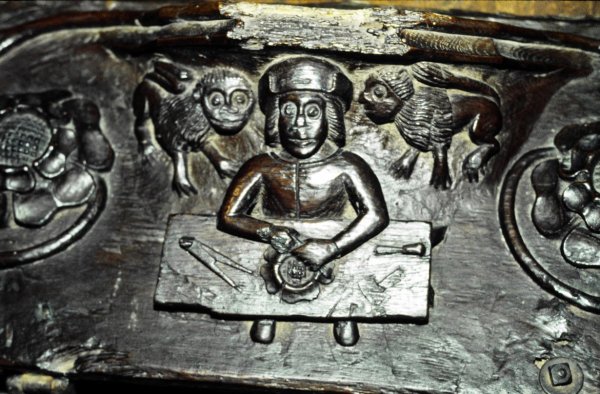
I’ve been accumulating misericords that feature woodworkers and so far have found 17 from six countries. With each one there are usually tools to note, maybe a workbench to study, or a new body position to try.
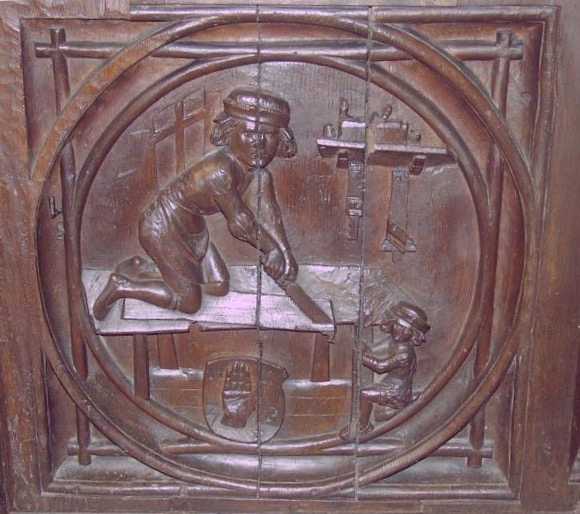
We can’t always see exactly what the carver is working on but at least one carver from Oude Kerk made sure we did.
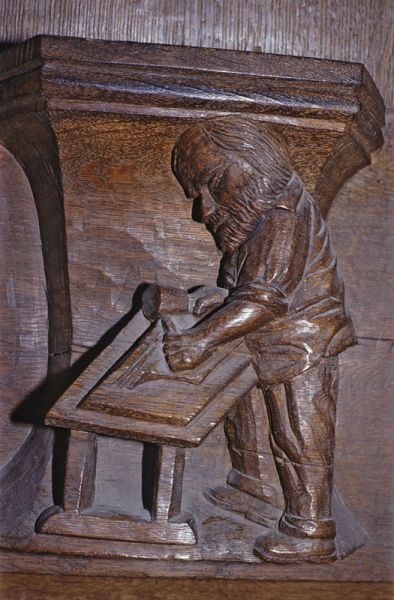
The Rigoley Brothers carved 26 choir stalls for La Collegiale Notre Dame in Montreal en Bourgogne, France. Larger carvings of the life of Christ were done at the end of each row. Atop a few of the end pieces are three dimensional scenes. Below is St. Joseph’s workshop.

Adorning the top you will notice a decidely non-biblical scene. The two men enjoying their wine are none other than the Brothers Rigoley toasting themselves.
The gallery has the rest of the roundup. If you happen to see more photos of a woodworking misericord please post a link in comments and include the location of the piece.
–Suzanne Ellison

